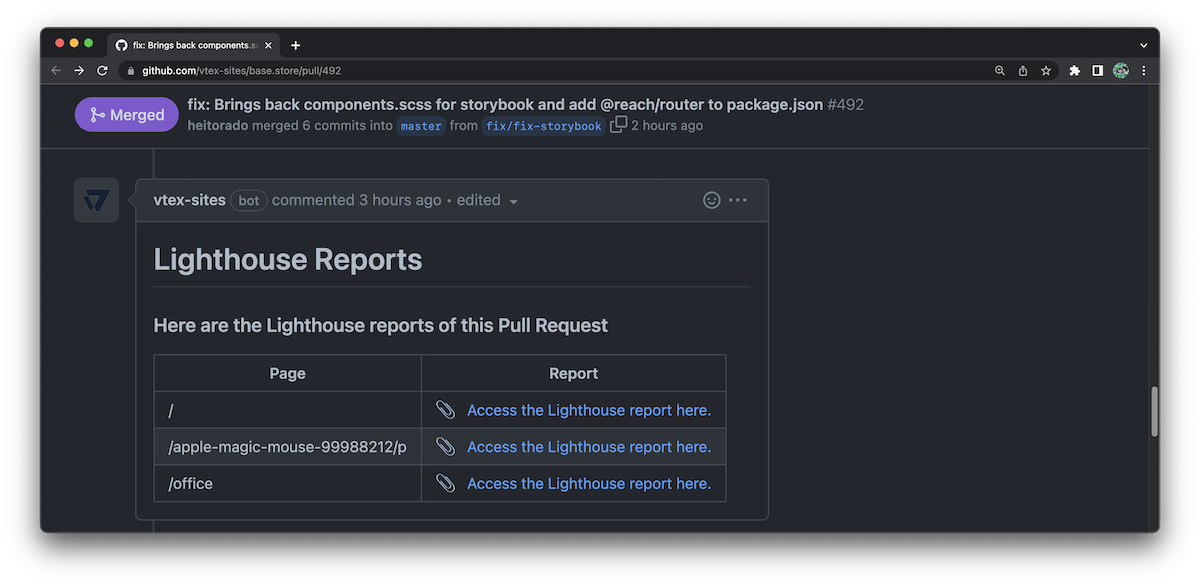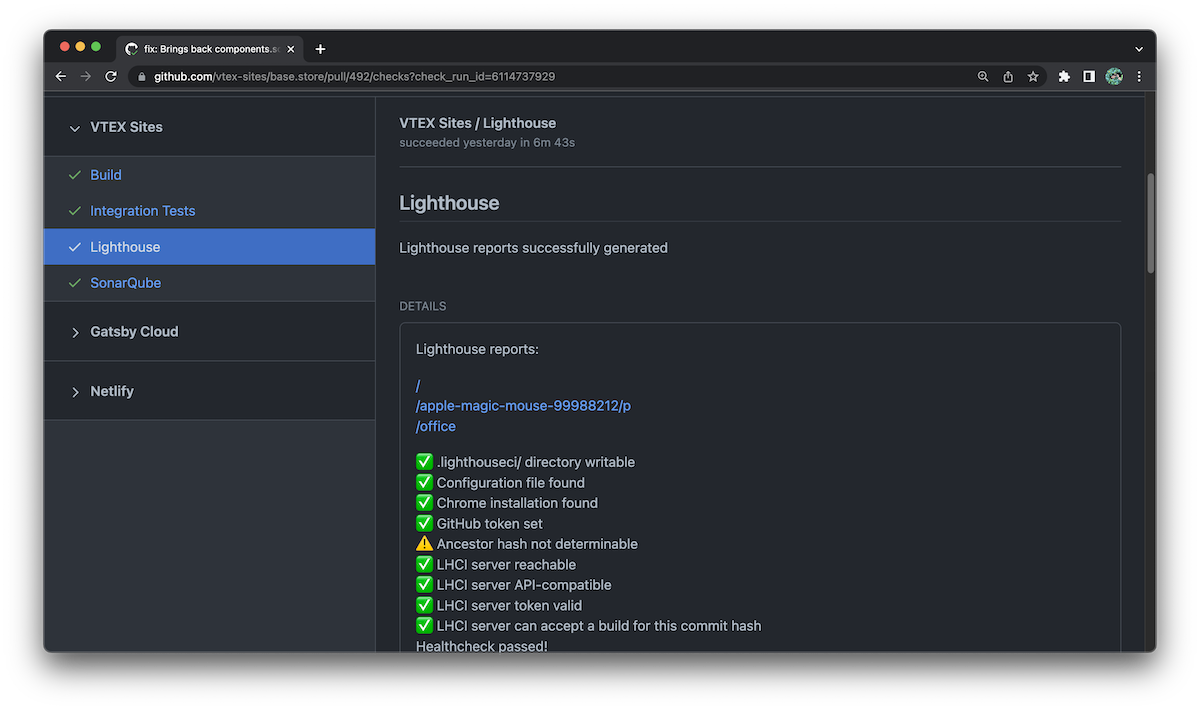Faster builds with new WebOps caching system
Next.js and Gatsby projects deployed with WebOps can now benefit from faster builds. WebOps now counts with a caching system, which avoids the expensive work of regenerating unchanged files.
What has changed?
WebOps can now reuse outputs produced from previous builds. This change reduces the number of requests for external services and, consequently, decreases building time.
Why did we make these changes?
These improvements aim to reduce WebOps overhead by enhancing the generation, saving, and deployment of compilation artifacts while also decreasing build time. For example, after implementing these changes, it was possible to notice a decrease from 63s to 34s in the building time of the Base Store (Next.js).
What needs to be done?
Set the following variables to true in the vtex.env file of your FastStore project:
USE_NODE_MODULES_CACHE=true
USE_FRAMEWORK_CACHE=true

